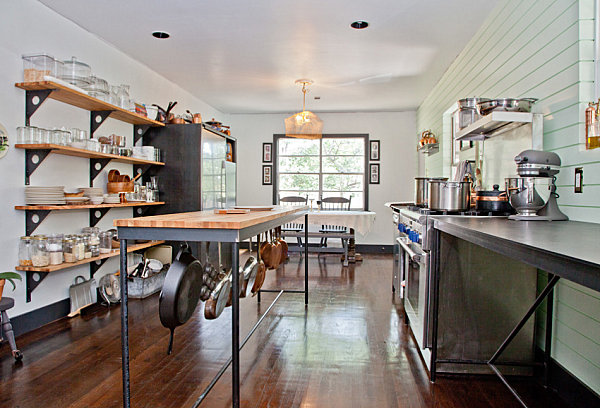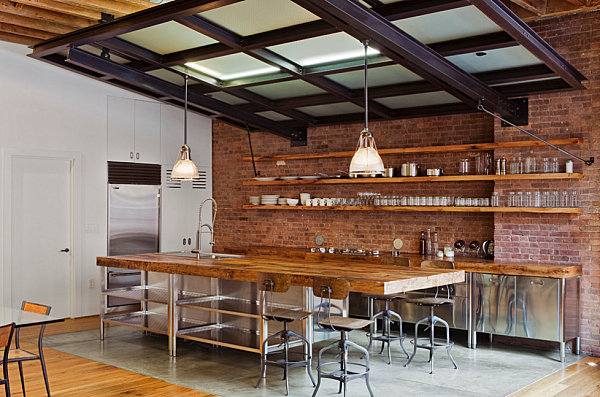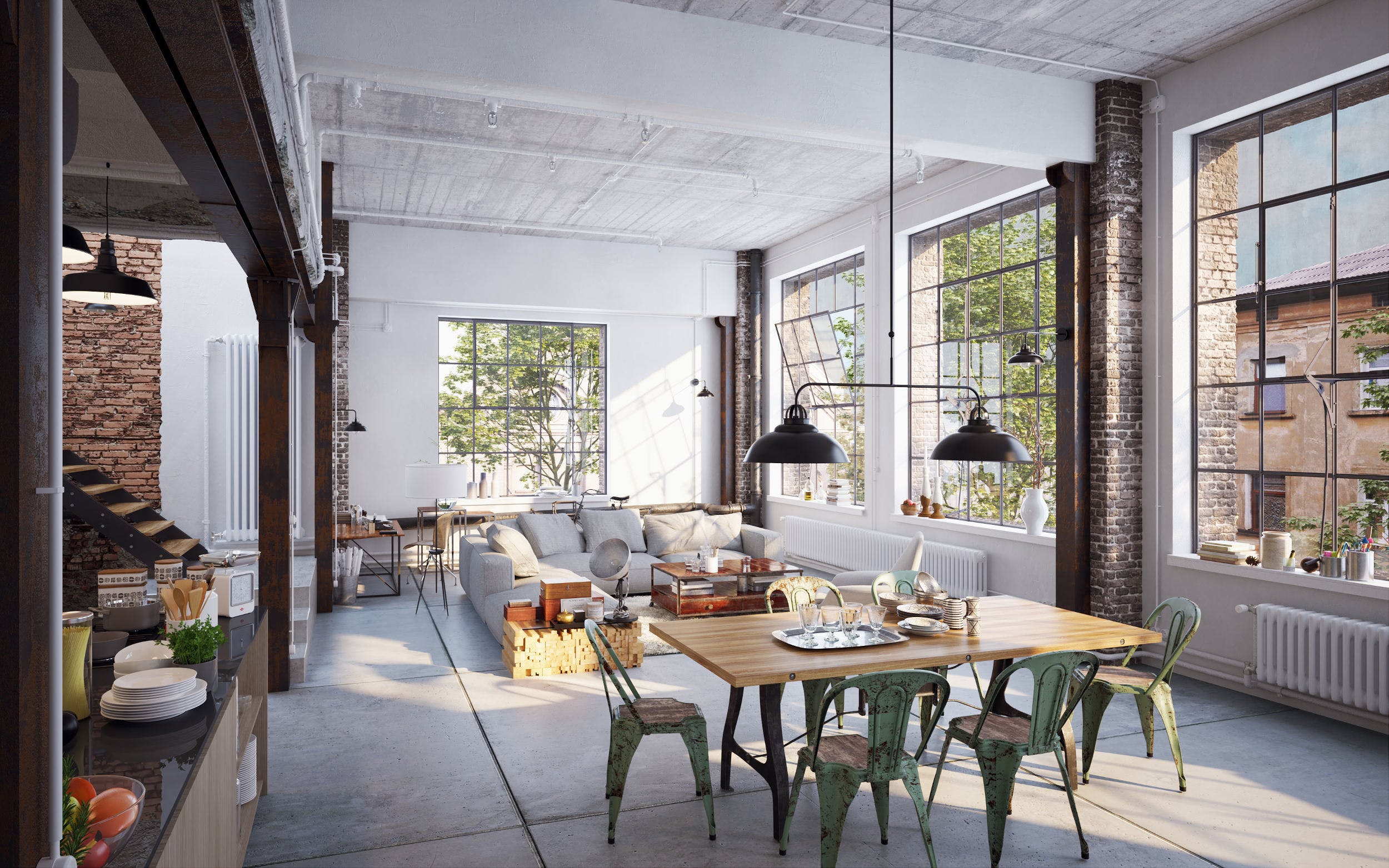Industrial style interiors have become a staple of modern interior design, offering a unique and stylish aesthetic. Whether you're designing a downtown loft or a spacious house, there are numerous ways to incorporate industrial design into your home. In this article, we will explore the key elements of industrial interior design and provide you with the best ideas to create a stunning industrial-style home.
What is Industrial Interior Design?
Industrial interior design draws inspiration from the lofty appearance of factories, warehouses, and other industrial buildings. It is characterized by architectural elements such as bare bricks, metals, wood, and reclaimed and recycled materials. The straightforward and fuss-free aesthetic of industrial design allows for personalization by using unique furnishings and accessories.
How Has Industrial Interior Design Evolved?
Industrial interior design emerged in the first half of the 20th century, coinciding with the second industrial revolution and the abundance of abandoned industrial structures. The increase in city populations led to gentrification, transforming industrial regions into residential neighborhoods. Smart architects and homeowners were the first to embrace the natural beauty and architectural details of industrial buildings, making it a popular design trend.
 Brick walls in bedroom
Brick walls in bedroom
What Defines Industrial Interior Design? Industrial Elements to Consider
1. Materials
The key to creating an industrial space is to mix rough, textured surfaces with neutral tones. Concrete is a crucial element in industrial design, from floors to walls and ceilings. Embrace cracks and stains as they add authenticity and historic feel. Expose supporting beams for an authentic factory atmosphere, and consider incorporating vents, ducts, brick walls, and various metal finishes. Repurposed wood with dents and age marks adds character to furniture and other elements.
2. Silhouettes
Industrial interior design employs blocky shapes and geometric lines to create a functional and practical look. Keep the use of organic curves and abstract shapes to a minimum.
3. Accessories
In a minimalist industrial-style home, keep accessories to a minimum. Find furnishings and accents that reflect the industrial past while still feeling fresh and modern. Add metal structures, abstract wall art, and salvaged items as accents to create a cool, masculine overall look with distinctive details.
 Blue and brown dining table and chairs set
Blue and brown dining table and chairs set
4. Colors
Consider neutral color schemes like gray, black, and white for an industrial-style living room. Don't be afraid to add some darker colors and hang colorful artwork on the walls to bring life and character to the space.
5. Furniture
Industrial design furniture is characterized by large-scale, low-profile pieces with strong and obvious lines. Avoid discernible patterns and embrace materiality in furniture choices.
6. Flooring
Polished concrete, stone, and wood are the best flooring options for an industrial design. Avoid using industrial-style rugs, but consider adding a small rug in a neutral color for a cozier effect.
7. Lighting
Industrial lighting often highlights the common light bulb as the primary illumination source. Utilize open-scale cages and incorporate pendants, table lamps, and floor lamps. Hanging bulbs, metal domes, and exposed bulbs on display are common examples of industrial lighting.
How to Make a Room Feel Industrial
1. Use a Neutral Color Palette
Stick to neutral colors like grays, browns, blacks, and whites. Use brick red, burnt orange, or dark green as statement colors, but keep the focus on one color.
 Industrial style with neutral colors
Industrial style with neutral colors
2. Wood and Metal Surfaces
Mix old and contemporary materials by incorporating a variety of metal and wood in your design. For example, use a vintage wooden vanity with a steel-framed mirror in an industrial-style bathroom.
3. Vintage and Antique Accessories
Combine metal and wood to create an earthy modern aesthetic in your industrial interior design. Consider using cabinets made of old-school industrial metal and incorporate metal and wood in various elements.
4. Expose Architectural Materials
Don't be afraid to showcase materials like steel, wood, brick, glass, and concrete. Embrace the unfinished and reclaimed look of these materials, highlighting their beauty and functionality.
5. Open Plan
Industrial design complements large, open floor plans. Arrange furniture in clusters to break up the space and make it feel less vast.
6. Grid Frame Windows
Choose window frames that resemble those in warehouses and factories. These windows allow ample light into the space and create a unique industrial look. Avoid window coverings, but if necessary, opt for a straightforward roller blind.
7. Repurposed Materials
Introduce natural elements, such as wooden furniture made from reused materials, to balance the metal-heavy components of industrial design.
8. Exposed Brick Walls
Exposed brick walls add a distinctive industrial and rustic touch to any space. Embrace the beauty of brick and consider leaving it exposed or incorporating it in non-industrial settings.
9. Bare Light Bulbs
Hanging Edison bulbs, pendant lights, and floor lamps that prominently display the bulb are classic industrial lighting choices. These light fixtures emphasize the sleek appearance of the bulbs and add to the overall industrial ambiance.
10. Distressed Leather
Incorporate distressed leather furniture, such as worn brown leather sofas, to create a cozy atmosphere in an industrial space.
11. Copper Cookware
Use copper pots and pans to add a cozy industrial feel to your kitchen. Copper cookware and kitchenware contribute to the charm and old-world aesthetic of an industrial kitchen.
12. Exposed Pipes and Ducts
Expose pipes and ducts that are typically hidden in other design styles. Exposed pipes can add an industrial touch to white spaces, creating a striking contrast against the whiteness of the walls and ceiling.
How to Soften an Industrial Style
To create a cozy and inviting atmosphere in an industrial-style space, consider the following:
- Use a cozy sofa and antique carpets to contrast with the cold metal elements.
- Add eye-catching wall art to add bursts of color and warmth.
- Incorporate soft furnishings in vibrant hues and use natural fabric roller blinds to soften angular shapes.
- Place plants at various heights to give a softer, tumbling appearance.
- Introduce additional organic shapes and textures to balance the industrial aesthetic.
- Combine different light sources to create cozy nooks and crannies of light.
Is Industrial Style Going Out of Style?
Industrial design has been a popular trend in interior design for quite some time. Its simplicity, functionality, and worn features make it relevant to our busy lifestyles. The industrial look is versatile and blends well with various design trends while maintaining its essential components. It continually evolves, focusing on elegant, luxurious, and high-quality materials. Industrial design is here to stay, as it is durable, timeless, and shows no signs of going out of style.
Conclusion
Industrial interior design offers a rustic and raw appearance through the use of wood, metal, open spaces, neutral colors, and practical objects. By incorporating the key elements and ideas mentioned in this article, you can create a stunning industrial-style home that reflects your personal style and provides a unique and stylish ambiance. Embrace the industrial aesthetic and unleash your creativity to transform your space into a functional and visually captivating industrial masterpiece.

















